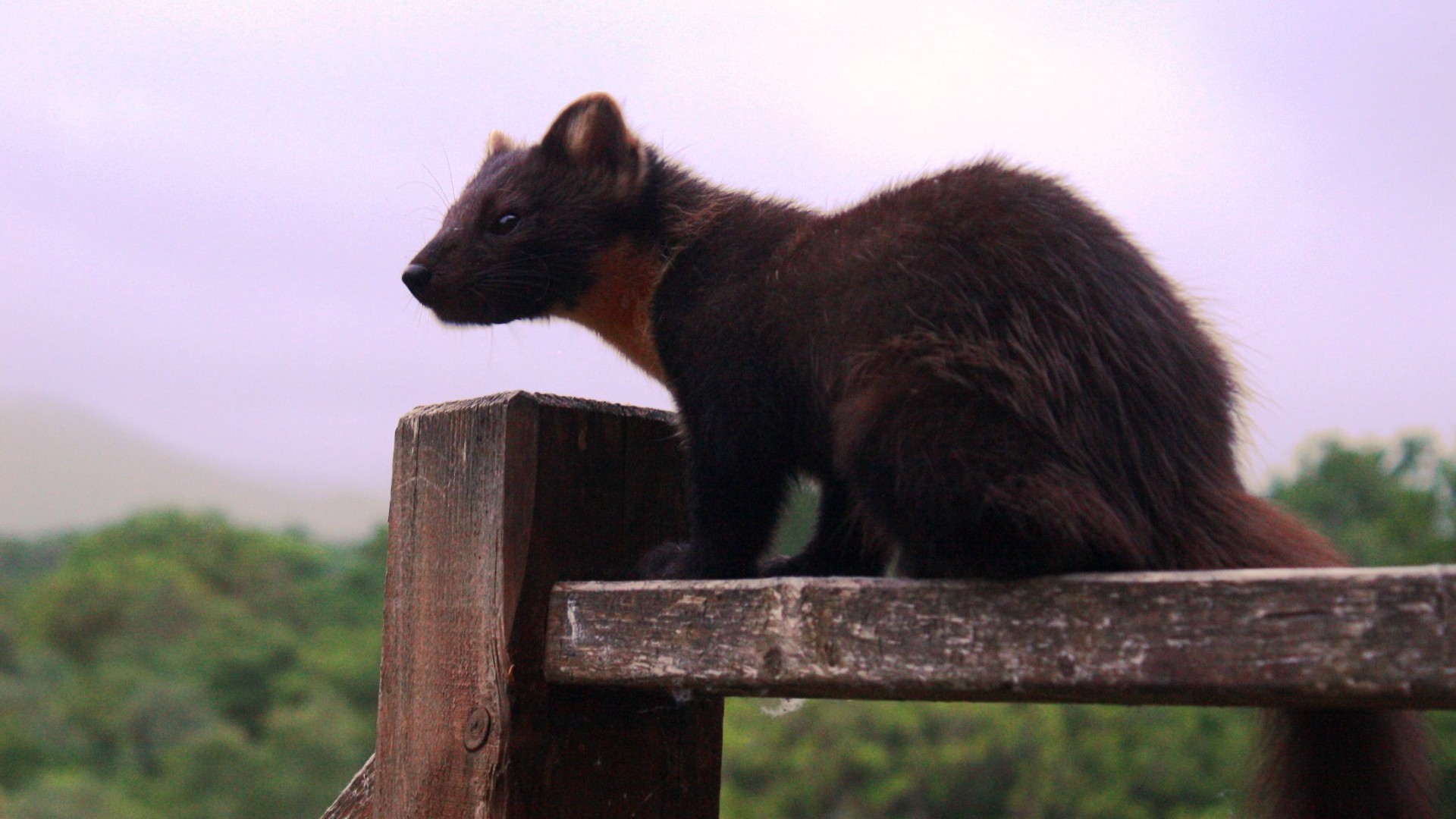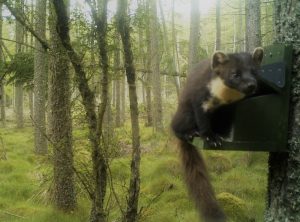Can tolerance help people and wildlife coexist?
Dr Keziah Nuttall, Born Free’s Conservation Manager, considers how tolerance and acceptance of wildlife can help people and wild animals to coexist.

A wild pine marten
Keziah recently completed her PhD on the recovery of native predators in the UK – focusing on the interactions between people and pine martens. Her fascinating research investigated people’s views and experience of predators and the factors influencing the recovery of pine marten across the UK. Keziah reflects on what she learnt through her research on people’s tolerance to the negative impacts of wildlife, and the actions Born Free is taking to help promote coexistence with wildlife globally.

Dr Keziah Nuttall
People and wildlife have lived together in ecosystems throughout our evolutionary history, with intriguing and often complex relationships. As you can imagine, carnivores killing or injuring livestock is often a topic at the centre of debates and conflict. Increasing competition between people and various species over resources such as water, food, and space is also a contentious issue. The danger some wild animals can pose to people’s safety can be significant and challenging to overcome. Globally, the burden of ‘human-wildlife conflict’ is often felt most in areas where people have lower incomes, limited access to livelihood opportunities, and are dealing with extreme climate such as drought.
How can we achieve coexistence, a situation where wildlife and people are able to successfully and continually adapt to living alongside one another? How can we ensure the survival of wild species, meet human wellbeing needs and reduce impacts on livelihoods and safety, so people are able to tolerate and accept wildlife?
To achieve coexistence between people and wildlife, increasing tolerance of the impacts of wildlife is a critical component. But, what exactly is ‘tolerance’ to wildlife? Is it a willingness or ability to accept the costs or perceived costs of living alongside a species, such as losing income when livestock are killed by a predator? And can someone accept these impacts when it is a species they dislike? Interestingly, from my research on recovering predators in the UK, including three mustelids (pine marten, polecat and otter) and three raptor species (golden eagle, red kite and common buzzard), we found that people rarely accepted the impacts of a species they had a negative attitude towards.
Scientists and conservationists are still working out the exact definition of tolerance and our understanding of what tolerance to wildlife means to the people involved. Although the direct financial cost of losing livestock can be important, research is exploring other factors that can strongly influence people’s attitudes and tolerance to a species and its impacts. For example, tolerance can be influenced by how beneficial a person thinks a species is, or their previous experiences (either positive or negative) with a species. A person’s interests, values and beliefs concerning wildlife and wildlife management can also strongly shape our tolerance of a species and its impacts. In certain situations, culture is also an important driver of tolerance. Often, deep social tensions between communities, organisations, and governments, relating to power, equity, and justice, can play a major role in shaping conflicts about interactions between people and wildlife.
There is not one clear solution to solve issues surrounding conflict between people and wildlife. In a perfect world, landscapes completely free of conflict between people and wildlife would be achievable, yet unfortunately this is very unlikely. Human population increase, land use change and climate breakdown are making it more challenging for both people and wildlife to find the resources they need to survive. Coexistence is possible even when negative interactions are still present, but continual adaptation and effective management are needed to overcome challenges.

A wild pine marten
There is not one agreed upon definition of coexistence and in addition to tolerance several other components are likely needed. These include effective institutions and good governance that ensures integrity, accountability, and transparency in management and decision-making processes, collaboration amongst all stakeholders, fairness and justice for all people involved, and consideration of human wellbeing. This emphasises how important it is to undertake holistic conservation projects that adapt and evolve to address the needs of people and wildlife.
Born Free’s field conservation programmes are designed to promote coexistence in their respective landscapes. In India for instance, the Satpuda Landscape Tiger Partnership, founded by Born Free and supported since its conception in 2004, is a strong example of the holistic approach we take. The partnership includes a diverse range of local conservation organisations working in collaboration with Government departments to implement projects addressing human health, sustainable livelihoods, conflict management, mitigating infrastructure development, wildlife monitoring, and environmental education, all aimed at facilitating coexistence between communities and the wildlife they live alongside.
Similarly, our Guardians of Dja programme – protecting gorillas, chimpanzees and other rare species in Cameroon – supports local people through skill development and empowerment to adopt less damaging livelihood practices, protect their natural resources, and increase the knowledge and awareness of school children and communities of their native wildlife.
Our programmes in Kenya empower local people to implement conflict mitigation methods to reduce predation of livestock by lions and other predators, and crop damage by elephants. Local Conservation Ambassadors are trained and equipped to respond to conflict situations in their communities, helping families deal with issues and seek compensation through government schemes. We support village level finance groups, that can help provide people a financial buffer in times of hardship and run education programmes in schools to help increase awareness about wildlife and conservation. These involve workshops specifically focused on animal behaviour and interactions with wildlife to help increase human safety.
Through a diverse range of initiatives, our conservation programmes aim to promote landscapes of coexistence, where people are able to tolerate and accept their wildlife neighbours, where the impacts of conflicts are reduced to tolerable levels, and where resources can be shared to allow both wildlife and local communities to thrive. It is only with your support that we can achieve coexistence and maintain a healthy and resilient planet.
